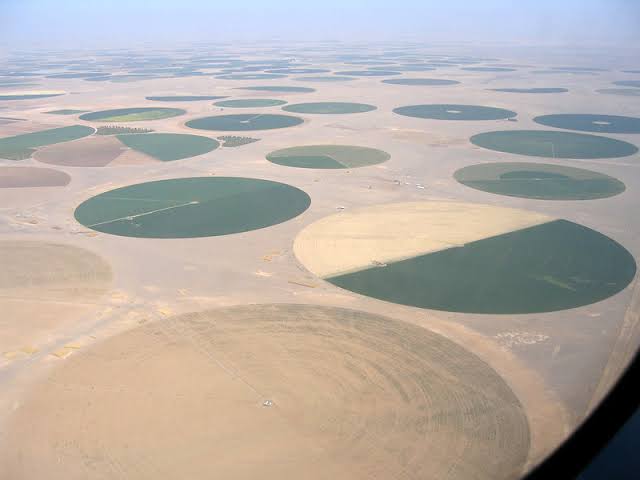Saudi Arabia is a country whose economy mainly depends on exporting oil. But who would have expected that these desert lands could be a hotspot for harvesting crops? It spends billions of dollars to import food from abroad using revenue generated from oil(nearly 80% of food).
Now it is trying to be self-dependent on food to avoid failures from global food supply networks. Saudi Arabia started focusing on agriculture in the 1970s and since then, it is one of the leading global producers of wheat, fruits(especially dates), vegetables, and milk.
How does such a country with a harsh climate and desert lands become a huge exporter of wheat?
The government started financing modern farming technology to encourage agricultural research and training institutes. Surprisingly, with the help of the latest irrigation methods, crops are farmable in the middle of the desert as well. In the last 60 years, they have modified 24000 square kilometers of desert into fertile lands. These farmlands are irrigated by the aquifers which are 2km deep into the ground.
With the center pivot irrigation method they supply water, herbicides, pesticides in a circular manner to the crops on a large scale, ensuring safe growth.
Nevertheless, with time the aquifers became empty and therefore leading to loss of water which in turn affects the crops. To sustain from lack of agriculture, the government bought agricultural lands in the US, Indonesia, Argentina, and other African countries and imported them from there.
Two royal Saudi princesses commenced a development project in rocky deserts which were once fertile lands.
This development project was led by Mona Hamdi from Harvard university bioethics and Neil Speckman who is an agriculturalist from Stanford University.
They lived in that area for 8 years and built check dams, rock terraces, and shallow ditches to trap water and store them. Unfortunately, there was no rain in that area for a long period and that project was halted in the middle. In 2018 and 2019, the areas had rainfall again which turned the land into a savannah. The rock terraces stored water and made the soil fertile.
After that, the country launched another project named “al-Bayda” to manage the unused flood water which is directed towards the sea.
If the entire west coast is covered under the project then 30 million acres will be transformed into agricultural lands. With this, the income generated from exporting agriculture will increase six times which may soar the GDP up to 5%.
In the same way, carbon gases will increase in the soil and this will cause rainfall in the region.
The country builds desalination plants to supply fresh water to its citizens to convert seawater into freshwater by means of reverse osmosis which depends on electricity.

